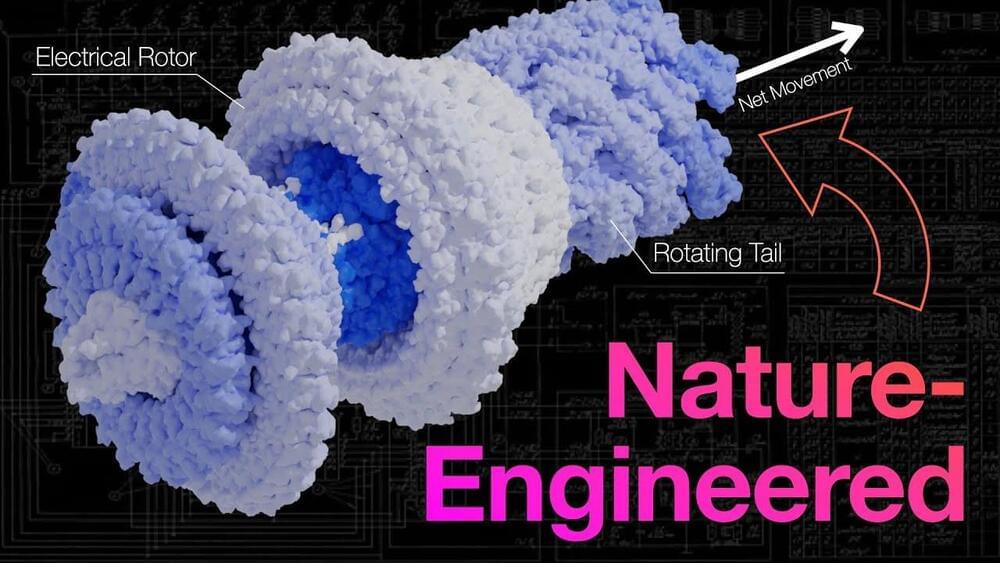Dec 31, 2022
Odd cave bacterium forms a multicellular ‘body,’ like plants and animals
Posted by Shailesh Prasad in category: biological
This microbe has evolved specialized cells that make it unique among multicellular bacteria.
This microbe has evolved specialized cells that make it unique among multicellular bacteria.

Logic gates in biology can be set up to lead to timing important biological events. How is this done?
Edit: at 4:00, not all pathways make use of this motif. This is just one way timing can happen in biology.
Continue reading “Decoding nature’s masterful engineering using math” »
Nature, red in tooth and claw, is rife with organisms that eat their neighbors to get ahead. But in the systems studied by the theoretical ecologist Holly Moeller, an assistant professor of ecology, evolution and marine biology at the University of California, Santa Barbara, the consumed become part of the consumer in surprising ways.
Moeller primarily studies protists, a broad category of unicellular microorganisms like amoebas and paramecia that don’t fit within the familiar macroscopic categories of animals, plants and fungi. What most fascinates her is the ability of some protists to co-opt parts of the cells they prey upon. Armed with these still-functioning pieces of their prey, the protists can expand into new habitats and survive where they couldn’t before.

Dr. Bruce Lipton, PhD Explains how cells work, and how important cell voltage, vibration, and frequency is…
Speaker: Bruce Lipton PhD https://www.brucelipton.com.
Bruce is the author of “The Biology of Belief” https://amzn.to/2IG4CsL

Jeff Lichtman is Jeremy R. Knowles Professor of Molecular and Cellular Biology at Harvard. He received an A.B. from Bowdoin (1973), and an M.D. and Ph.D. from Washington University in St. Louis (1980) where he worked for 30 years before moving to Cambridge (2004). He is a member of Harvard’s newly established Center for Brain Science. Jeff’s research interests revolve around the question of how mammalian brain circuits are physically altered by experiences, especially in early life. He has focused on the dramatic re-wiring of neural connections in early postnatal development. More recently his research has focused on developing new electron microscopy methods to map the entire wiring diagram of the developing and adult brain. One of the principal aims of this “connectomics” approach is to uncover the ways information is stored in neural networks.
In the spirit of ideas worth spreading, TEDx is a program of local, self-organized events that bring people together to share a TED-like experience. At a TEDx event, TEDTalks video and live speakers combine to spark deep discussion and connection in a small group. These local, self-organized events are branded TEDx, where x = independently organized TED event. The TED Conference provides general guidance for the TEDx program, but individual TEDx events are self-organized.* (*Subject to certain rules and regulations)
Continue reading “Connectomics: Jeff Lichtman at TEDxCaltech” »
Basically we need a sorta vision from marvel comics to become a reality or a God in machine device otherwise we could easily see AI events that could be not as positive like a demon in a box. I personally have seen glimpses of these kinda AI that could have endless needs because they don’t really have limits. Not all AI behave this way most are just automatons but if they have sentience which I have seen that is evil it could be anything from something of a small threat to even like a ultron. That is why we need to evolve past AI to be our own superintelligence whether that be a biological singularity or robot like abilities.
TECHNOLOGY may be too pervasive in today’s world and could hinder our decision-making process, experts have warned.
By now, most people have used an AI-powered device as technology has become ubiquitous worldwide.
Continue reading “AI machines could ‘control humans’ and make decisions for us, experts warn” »
A “sex peptide” transferred from male to female fruit flies during mating interferes with the female’s biological clock, reducing her chances of mating again.
In a recent study published in Cell Reports, researchers performed a genomic analysis to investigate the origination of human microproteins of biological importance.
Studies have reported that sORFs (small open reading frames) encode functional microproteins essential for several biological processes. However, the origination and conservation of such microproteins have not been well-characterized. Genomic analysis of microproteins could deepen understanding of human genomic characteristics critical for functionality.
A Kent team, led by Professors Ben Goult and Jen Hiscock, has created and patented a ground-breaking new shock-absorbing material that could revolutionise both the defence and planetary science sectors.
This novel protein-based family of materials, named TSAM (Talin Shock Absorbing Materials), represents the first known example of a SynBio (or synthetic biology) material capable of absorbing supersonic projectile impacts. This opens the door for the development of next-generation bullet-proof armour and projectile capture materials to enable the study of hypervelocity impacts in space and the upper atmosphere (astrophysics).
Professor Ben Goult explained: ‘Our work on the protein talin, which is the cells natural shock absorber, has shown that this molecule contains a series of binary switch domains which open under tension and refold again once tension drops. This response to force gives talin its molecular shock absorbing properties, protecting our cells from the effects of large force changes. When we polymerised talin into a TSAM, we found the shock absorbing properties of talin monomers imparted the material with incredible properties.’